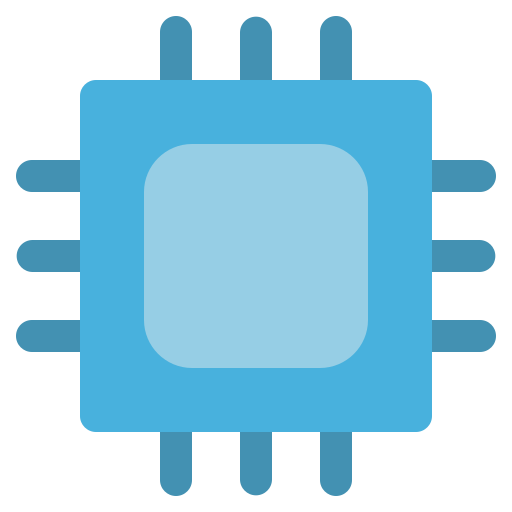- 35 Posts
- 381 Comments

 71·2 days ago
71·2 days agoBut can it run Crysis?
I’m happy they will use it to solve the most important problems of our life, and it will be useful for humanity as a whole
The National Nuclear Security Administration (NNSA) will use the system to modernize the US nuclear arsenal by simulating explosions to eliminate the need for underground detonations and simulate aging effects, safety, and reliability of the nuclear stockpile. The system will also be used to develop two new ICBM designs.
Oh at least it’s not some AI bullshit, but physics and simulations.
The system will be used for HPC and AI workloads, or a fusion of the two.
Fml

 181·2 days ago
181·2 days agoIt’s a feature of an Android app (I even guess it’s preinstalled on some devices), and it was clearly stated in the title, that it’s not an Android feature, but it’s a feature of G**gle Authenticator.
Yesterday you agreed to my comment, that the problem is when Android and other app features are mixed up. Here it’s clearly stated that it’s not an Android feature.
You request more tight moderation, but unnecessarily strict mod control can kill communities. This news is related to Android, and isn’t against any of the rules on the sidebar. If you don’t want to see it downvote and move along. If a lot of us downvote it maybe OP will think differently and stop posting these articles.
Python is installed by default on all linux and mac systems, so it’s just one more command to install pipx. From there just
pipx install tagify. You don’t need an installer, just specify the build tools in pyproject.toml: https://packaging.python.org/en/latest/specifications/pyproject-toml/#declaring-build-system-dependencies-the-build-system-table e.g. with setuptools: https://setuptools.pypa.io/en/latest/userguide/pyproject_config.htmlIf you publish to pypi it will build the wheel files when you publish a version. That’s the easiest way I know.
Innosetup is windows only. On linux you don’t need such a thing.
Some feedback:
- On white background the text next to the logo is not visible
- Add screenshots in the README, it’s a GUI app
- Requirements.txts for dependency management is the old way, read about
pyproject.tomlyou can merge them a single easy to read and edit file - “Install the dependencies” means nothing to a non-python developer. Direct users to install your project via pipx, that’s modern and secure way of installing a python application with dependencies for non developers. Publish it to pypi for even easier installation.
- Add a notice that currently it’s windows only
os.path.join(os.environ["APPDATA"], "Tagify", "config.yaml")will fail on *nix systems. Usepathlib.Pathinstead ofos.path. Use pathlib, I see on a lot more places it would make your life much easier. - I have a feeling that the file icons are not your work. If you copied them from somewhere make sure their license is compatible, and add an acknowledgement.
Keep up the work, it seems like a nice project!

 311·3 days ago
311·3 days agoI’m also ok if both of them are posted here, as most people use android with Google Play Services (GMS). But I’m annoyed when the two used as a synonyms. E.g “Android will get a new XY feature” than I open the article and I see it will be a feature of GMS not mainline android.
On a basic news website, or even in a more casual lemmy community I wouldn’t be bothered with this. But we should be a bit more professional in a dedicated android community, with less clickbaity titles.
BTW I use microG

 15·3 days ago
15·3 days agoIt’s a marketing article with nearly zero actual facts. One screenshot about the actual product.
MS and others already use AI for drawing building countours for OpenStreetMap and OvertureMaps from aerial imagery. In osm these AI generated lines are only allowed to be imported after a human supervision and currently it’s very hit or miss. On low density areas it’s mostly good, but in dense city centers it’s unusable.
In overture maps these lines are imported automatically, that’s why you can see buildings on rivers.
They don’t write about these shortcomings in the article, and how they solved AI hallucinations

 3·4 days ago
3·4 days agoIt’s documented in the wiki, they are called VCS packages, and it’s not the usual, they work a bit differently: https://wiki.archlinux.org/title/VCS_package_guidelines
You can see in this instance, that it skips the sha checking for upstream source, in line 15 of the PKGBUILD it says ‘SKIP’: https://aur.archlinux.org/cgit/aur.git/tree/PKGBUILD?h=hyprspace-git#n15
sha1sums parameter is documented in the wiki: https://wiki.archlinux.org/title/PKGBUILD#sha1sums
In the PKGBUILD file you can list sources (line 12,13) and their respective checksums (line 14,15). In this PKGBUILD there are 2 sources: the first is the systemd unit file, it’s coming from the package’s AUR repo, not from upstream, you can see its checksum. The second source is the actual source, and you can see, it’s checksum is ‘SKIP’ so it shouldn’t be checked.
With these kind of packages you can’t get notified if there is an update available, but if you install it again with your favorite AUR helper it would update itself for the latest version. It calculates version number from the latest commit hash, before building and installing, so if that is the same it won’t update again.
Good video… but a nearly 2 minute ad in a 5 minute video? ~40% ad? Wow.
Not counting yt ads as I block them. I’m considering starting to use sponsorblock, this is too much.

 2·5 days ago
2·5 days agoNix just calls the *.nix files, it’s still go under the hood. PKGBUILD is similar to the flake.nix and package.nix files to me, but I have no experience with nix.

 6·6 days ago
6·6 days agoI think that may be an American thing. I’ve never seen one here in Europe.
I can see it without login

 8·6 days ago
8·6 days agoMy general view is similar, yaml is better if it should be written by humans, json is better if it should be written and read only by a machine. but hyprspace uses json for configuration, so I don’t really understand cellardoor’s comment

 51·6 days ago
51·6 days agoThey are users not developers. An academic or civil engineer who uses a CFD simulator usually has not enough programming knowledge develop such a complex application. The employer has not enough funds to pay for developers (see, they use a pirated software). Paying for developers is still more expensive than buying an already developed product.
Just look at the state of FOSS CAD software. There are some, but they are very-very limited compared to proprietary alternatives. Most people don’t care, they just want to get the work done. Not everyone is a programmer, even if it looks like that from our lemmy bubble.

 93·6 days ago
93·6 days agoIn the Register article they didn’t copied from the source that the scientists were from Egypt.
Flow3D has different academic and research licenses: https://www.flow3d.com/academic-program/
- There is a free research license available, but it’s only for 4 months. It’s short, researches can take much longer than that.
- There is a free teaching license, but it can have limitations for using the software outside education. It may be forbidden to use outside classes, so it’s possible that they had a teaching license, but they couldn’t use that for research?
- There are licenses for full departments, but it’s available for selected countries only.
It’s strange that they went after these scientists. In 2nd and 3rd word countries software privacy for work is still common. Everything is cheaper, but software prices are the same as in the US, so they pay relatively more for the same tool. I found that a normal license for Flow 3D can cost USD 100k. According to a quick search civil engineers get USD 2000 yearly in Egypt.
Usually American software companies don’t really care about piracy by individuals in these countries. The rationale is that it’s better for them if they use their software without payment instead of using a software from another vendor without payment. They go after bigger companies, at least that’s my experience.
That’s why this story is strange to me, or at least something else should be behind it.

 321·6 days ago
321·6 days agowhat: is: your: - problem - with: YAML # At least you can have comments unlike in json. Who need comments in a config file anyway.

 10·6 days ago
10·6 days agoOr port forwarding. You have to open a udp port for wireguard

 14·6 days ago
14·6 days agoAUR packages ending with"-git" or “-svn” always pull the latest commit from source. The version number means that was the last time the packager had to change something on the PKGBUILD script, not the actual version which would be installed.
Where should I look? Where were these talks? I’m interested.
Edit: I found the whitepaper about hole punching: https://research.protocol.ai/publications/decentralized-hole-punching/
It says it connects to a “Hole Punch Coordination (DCUtR - Direct Connection Upgrade through Relay)”. So for NAT traversal to work, you need a third party, this relay. As I expected. I guess you can self host this, but than you could just host a wireguard server. I guess if you are on a locked down network where you cannot connect to any relay (e.g. how the Chinese Great Firewall works technically they could block it) you can’t initiate a connection behind a NAT.
Nonetheless it seems interesting, but no magic here. Maybe the big difference that the relay servers are distributed, so no central authority to block easily.

 28·7 days ago
28·7 days agoInteresting, it’s on AUR, I will try it.
So it doesn’t need any port forwarding, and works on CGNAT? How the “NAT hole punching” works? Both clients connect to something on IPFS?
Afaik, for DHT with torrent, clients need to know at least one tracker, what is the “tracker” here? Something on IPFS? Who am I sending my IP addresses?
How much overhead does this add to speed? I love with Wireguard, that it’s barely noticeable, really close to p2p speeds, OpenVPN was awful in this regard.




















If they won’t pay with it, isn’t it just an email address with a password? If the laptop is company issued OP can just use their new compwny email address, than don’t use that address for anything outside work related stuff.